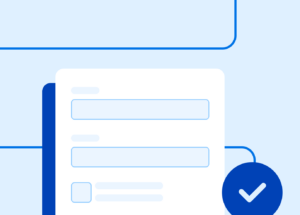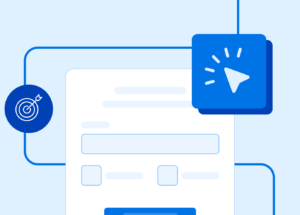When you consider the key elements that set up a website for success, you probably think of home and services pages or even a contact page. You may also agree that these pages should have a design and layout that is on-brand and user-friendly. But there’s one element that many people overlook—the contact form.
A contact form acts as a communication gateway between your company and individuals on your website. And it’s a critical part of generating leads for your business. But as important as contact forms are, their design is often overlooked. The result? A form that can go unnoticed and miss capturing important information from site visitors.
So, how do you make sure your contact form design stands out from the crowd? Let’s dive into the creative ways you can improve the look and feel of your contact form.
Why update your contact form design?
A contact form has two main purposes: to give customers an easy way to contact you and to generate new leads. You want to make this process as seamless as possible to encourage people to submit their questions or get in touch with your company.
This is especially important when research shows that over 80% of people have abandoned a form after starting, never to return. Putting serious thought into your contact form design has several advantages:
- People will feel inspired to actually use the form
- Allows you to show off your brand’s personality
- The form will be more memorable
Knowing exactly how to inspire respondents to complete a form or highlight your brand sounds tricky. Thankfully, there are a lot of research-based best practices available that you can reference when designing your contact form.
Contact form design best practices
Updating your contact form design should align with the goals you have for the form itself. A contact form is fairly self-explanatory. You’ll want to ask for the right amount of information from your form respondent while also ensuring that your form is preventing unwanted spam.
1. Add a little character
Nobody likes a website without a personality. The same goes for contact forms. When designing your form, don’t be afraid to add your brand’s tone of voice and style. This will help your form feel more familiar to respondents.
Another simple way to add your brand’s personality is through custom error messages. When a respondent incorrectly fills out a field, let them know with text that sounds like the voice of your company.
For example, instead of saying, “Error: Incorrect value,” you could say, “Hmm, it looks like the email format is invalid. Can you try again?” Sounding more human while staying on brand can help keep your respondents engaged, even if something goes wrong.
2. Keep colors consistent
Your contact form is an extension of the branding on your website—and this induces your brand’s colors, too. If you’re tempted to create a grayscale form, you may want to reconsider. The right colors can improve your respondent’s experience and can even influence their emotions.
But colors don’t just need to be used to brighten up your contact form design. They can also help to highlight important information, such as red error messages or bright orange CTA buttons.
Whatever colors you choose, be sure they complement branding colors your company already has established. It’s also a good practice to pick colors with a contrast ratio that meets web accessibility standards.
>>Read Now: 7 Web Form Usability Tips to Optimize Submissions<<
3. Showcase company branding
Your company’s branding is on your website, brochures, and business cards. Your contact form should be no exception. Adding your company logo, custom fonts, and other recognizable brand elements can help respondents know they’re in the right place.
You never want a person to neglect your form because it feels off-brand or spammy. The more your contact form design looks like it was meant for your website, the more likely a respondent will be to complete your form and give you the information you need.
If all this customization feels daunting, FormAssembly makes building and designing web forms easy in our drag-and-drop Form Builder. Learn how it works in this tutorial.
4. Personalize the introduction
Too many contact forms lack one engaging element: a personalized message. Adding a custom greeting will help respondents feel welcomed and know that you’re looking forward to hearing from them. The less cookie-cutter these messages, the better.
While it’s important to personalize any form, it is especially important on the form that encourages people to reach out to you. Unique messaging details on your contact form will help you stand out from the crowd and make a human connection.
Be sure to also let your respondents know when they can expect your company to contact them back. This assurance can be the difference between submitted information and a user bouncing off your contact page.
5. Try an unconventional CTA
Most CTA buttons on contact forms simply say “Send” or “Submit.” But these buttons aren’t very descriptive or interesting. While CTA button text should be clear, this is a good place to get more creative and specific.
Button text like “Talk to a Human” or “Give Us a Shout” are interesting enough to grab the attention of a respondent and can further reflect your company’s unique voice. When appropriate, experiment with unconventional CTA button text as part of your contact form design.
You can always test different button text options to see which resonates better with your audience. Ultimately, your goal is always to help people complete and submit your contact form. So, even if the best-performing button text seems a little boring, it’s a good idea to stick with it instead.
Start designing better contact forms
Contact form design doesn’t have to be difficult or intimidating. By following our creative tips and best practices, you’ll have a contact form up and running in no time.
If you want to learn more, be sure to download our eBook, 4 Steps to Better Web Forms. This comprehensive guide provides all the advice and best practices for creating on-brand, user-friendly forms that help improve response rates, customer engagement, and data collection.


